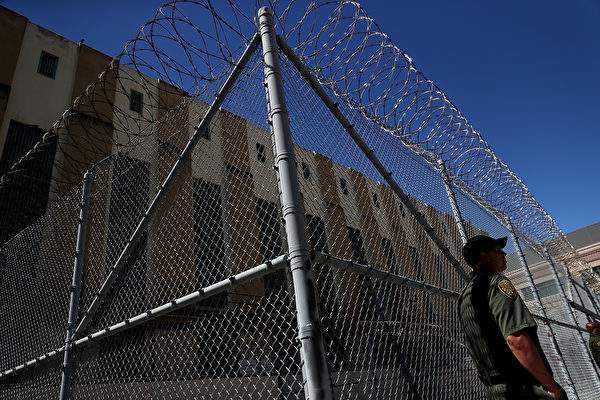California government officials announced on August 4 that due to the state’s policies promoting rehabilitation over incarceration, the prison population has significantly decreased, leading to the closure of a prison facility in Southern California.
The California Department of Corrections and Rehabilitation (CDCR) stated that they plan to close the California Rehabilitation Center located in Riverside County before the fall of 2026. In a statement, CDCR mentioned, “The adult prison population has been decreasing in recent years, allowing CDCR to reduce its reliance on contracted prison capacities within and outside the state.”
According to the 2026 California budget, the closure of the prison is aimed at helping alleviate the state government’s $12 billion deficit. Officials estimate that closing the prison will save the state approximately $150 million annually.
The Riverside County prison is a medium-security facility currently housing around 1,191 staff and 2,766 inmates. The building was originally opened in 1928 as the Lake Norconian Club, a luxury hotel. In December 1941, then-President Franklin D. Roosevelt converted it into a naval hospital. In 1962, the federal government donated the hospital to California, which repurposed it as a detox center. The facility began housing inmates in the 1980s, according to prison officials.
After the closure of this prison, California will be left with 30 state prisons. According to CDCR data, the prison population in California this year is around 91,000, the lowest level since the late 1980s. In contrast, the state’s prison population exceeded 173,000 in 2006.
According to a report from the Public Policy Institute of California (PPIC) in February, California has reduced its prison population and density through various policies. State lawmakers have been leaning towards diverting non-violent drug and property offenders from prisons and opting for mandatory rehabilitation treatment and community supervision instead. During the COVID-19 pandemic, California also implemented early release policies for some inmates.
In 2014, voters approved Proposition 47, reducing certain drug and property crimes from felonies to misdemeanors (except for those with specific prior convictions), aiming to reduce the prison population and direct funds towards community programs. However, in 2024, voters approved with a high support rate of 70.5%, indicating strong desire among California voters to enhance community safety.
Proposition 36, also known as the “Reducing Homelessness, Addiction, and Theft Act,” aims to repeal Proposition 47. It imposes harsher penalties on certain drug and theft repeat offenders and strengthens punishments for robbers.
Previously, CDCR had closed three facilities, including the Deuel Vocational Institution in Tracy, the California Correctional Center in Susanville, and the Chuckawalla Valley State Prison in Blythe.
CDCR has also deactivated eleven facilities, portions of two other facilities, and 42 housing units in eleven prisons. These deactivated facilities are still under state government control and can be reactivated in the future or repurposed for other uses.
Chad Bianco, a candidate for California Governor in 2026 and the Riverside County Sheriff, criticized the decision to close prisons. He accused Governor Newsom of implementing “crime-enabling policies” that prioritize criminals over victims.
In a statement submitted to Epoch Times, Bianco said, “With violent criminals still wreaking havoc in our communities, closing another state prison is not reform but a reckless move.” He emphasized that California should not weaken its ability to hold criminals accountable.
“If I am elected Governor, I will stand with victims, prioritize public safety, and reopen the prisons closed by Newsom,” Bianco stated.

